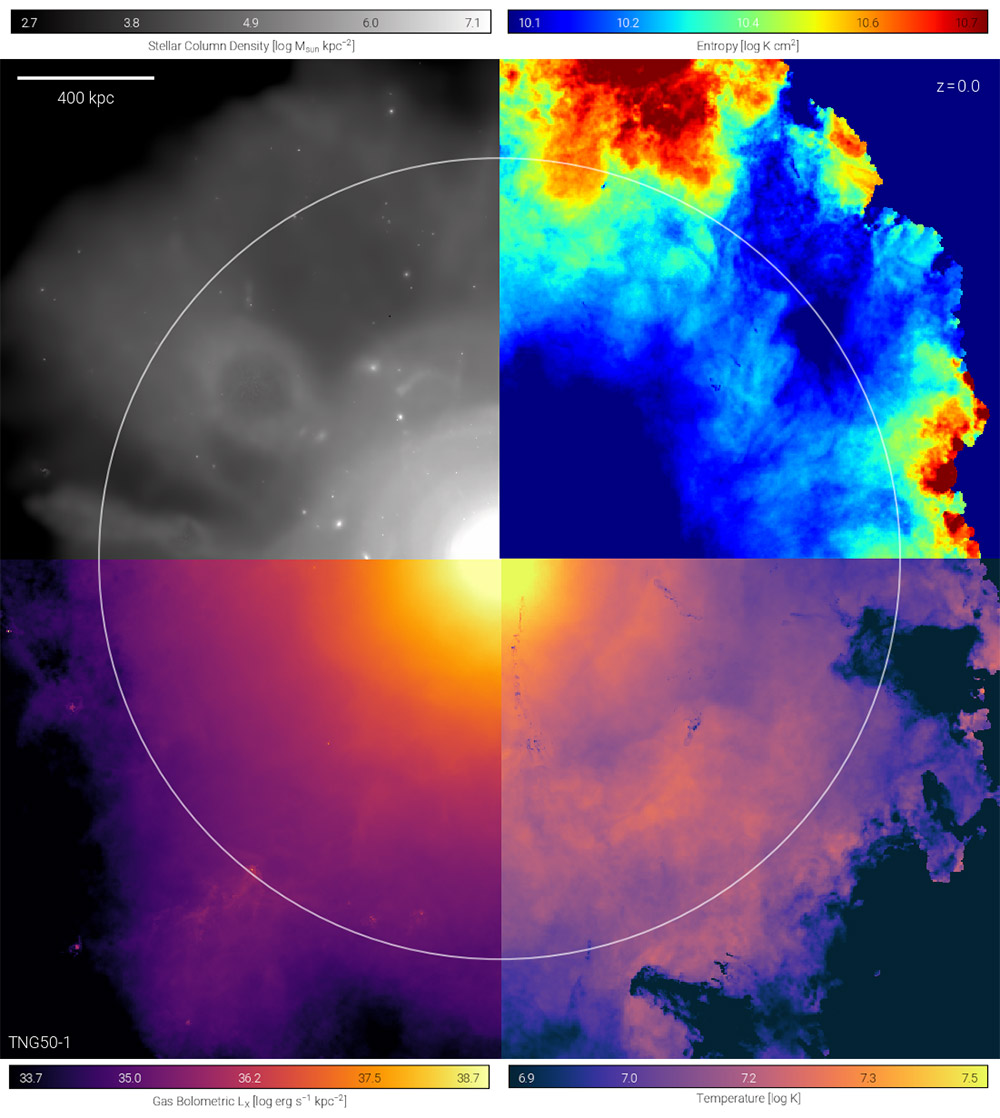Cloudy With a Chance of Rain: Simulating the Galactic Weather
Katrin Lehle – Hector RCD Awardee Dylan Nelson
Galaxies are embedded in a rich and complex atmosphere – the circumgalactic medium (CGM). Understanding the processes going on in the CGM is inevitable for a self-consistent model for galaxy evolution. Thus, we will shed some light on open questions about galaxy clusters using numerical simulations. We will analyze the already existing cosmological state-of-the art simulation IllustrisTNG and also write new types of simulation.
Galaxies are not isolated islands of stars floating around in space but surrounded by a rich and complex atmosphere – the circumgalactic medium (CGM). Clearly, a self-consistent theory of galaxy evolution is only achievable if we understand the processes going on in the atmospheres of galaxies.
Just as our earth, a galaxy is a complex ecosystem and has a weather. Supermassive black holes and supernovae inject massive amounts of energy into the atmosphere and drive outflows. Observations and simulations suggest that the gas in the atmosphere is a multi-phase medium where cool, dense clouds may eventually form within a hot and diffuse phase. These clouds can rain back onto the galaxy and fuel further star formation and black hole accretion.
This baryonic cycle resembles similarities to the water cycle on earth, however, additional processes such as merging satellite galaxies and cosmic inflows need to be considered. Due to the complexity of the CGM it is crucial to employ numerical simulations for finding theoretical models. This is why we work with the state-of-the-art cosmological hydrodynamical simulation IllustrisTNG.
We focus on the most massive objects in the universe, namely galaxy clusters. Galaxy clusters are well suited for such studies since their gas can be observationally well studied in X‑ray wavelengths. Furthermore, galaxy clusters still bring some unresolved puzzles with them. For example we cannot observe cold gas reservoirs and excessive star formation in the centers even though the observed central cooling timescales suggest that star formation should happen at a high rate.
In this PhD project we will shed some light on these unknown processes by analyzing already existing cosmological simulations and on the other hand writing new type of simulations.
In the figure the most massive dark matter halo of the TNG50 simulation is shown. The white circle depicts the virial Radius. The four different panels show different properties of this halo. Upper left: stellar column density, upper right: entropy of the gas, lower left: bolometric x‑ray luminosity of the gas, lower right: gas temperature.

Katrin Lehle
Heidelberg UniversitySupervised by

Dylan Nelson
Physics, Informatics

